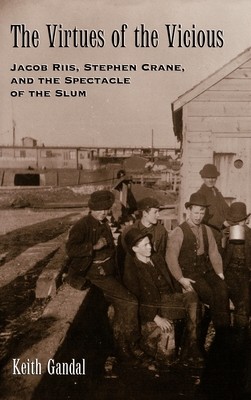
- We will send in 10–14 business days.
- Author: Keith Gandal
- Publisher: Oxford University Press, USA
- ISBN-10: 0195110633
- ISBN-13: 9780195110630
- Format: 16.9 x 22.5 x 2.3 cm, kieti viršeliai
- Language: English
- SAVE -10% with code: EXTRA
Reviews
Description
In this compelling work, Keith Gandal reveals how the slum in nineteenth-century America, long a topic for sober moral analysis, became in the 1890s an unprecedented source of spectacle, captured in novels, newspapers, documentary accounts, and photographs. Reflecting a change in the middle-class vision of the poor, the slum no longer drew attention simply as a problem of social conditions and vice but emerged as a subject for aesthetic, ethnographic, and psychological description. From this period dates the fascination with the "colorful" alternative customs and ethics of slum residents, and an emphasis on nurturing their self-esteem. Middle-class portrayals of slum life as "strange and dangerous" formed part of a broad turn-of-the-century quest for masculinity, Gandal argues, a response to a sentimental Victorian respectability perceived as stifling. These changes in middle-class styles for representing the urban poor signalled a transformation in middle- class ethics and a
reconception of subjectivity.
values and virility. With framing discussion that relates slum representations of the 1890s to those of today, and featuring a new account of the Progressive Era response to slum life, The Virtues of the Vicious makes fresh, provocative reading for Americanists and those interested in the 1890s, issues of urban representation and reform, and the history of New York City.
EXTRA 10 % discount with code: EXTRA
The promotion ends in 21d.12:43:42
The discount code is valid when purchasing from 10 €. Discounts do not stack.
- Author: Keith Gandal
- Publisher: Oxford University Press, USA
- ISBN-10: 0195110633
- ISBN-13: 9780195110630
- Format: 16.9 x 22.5 x 2.3 cm, kieti viršeliai
- Language: English English
In this compelling work, Keith Gandal reveals how the slum in nineteenth-century America, long a topic for sober moral analysis, became in the 1890s an unprecedented source of spectacle, captured in novels, newspapers, documentary accounts, and photographs. Reflecting a change in the middle-class vision of the poor, the slum no longer drew attention simply as a problem of social conditions and vice but emerged as a subject for aesthetic, ethnographic, and psychological description. From this period dates the fascination with the "colorful" alternative customs and ethics of slum residents, and an emphasis on nurturing their self-esteem. Middle-class portrayals of slum life as "strange and dangerous" formed part of a broad turn-of-the-century quest for masculinity, Gandal argues, a response to a sentimental Victorian respectability perceived as stifling. These changes in middle-class styles for representing the urban poor signalled a transformation in middle- class ethics and a
reconception of subjectivity.
values and virility. With framing discussion that relates slum representations of the 1890s to those of today, and featuring a new account of the Progressive Era response to slum life, The Virtues of the Vicious makes fresh, provocative reading for Americanists and those interested in the 1890s, issues of urban representation and reform, and the history of New York City.


Reviews